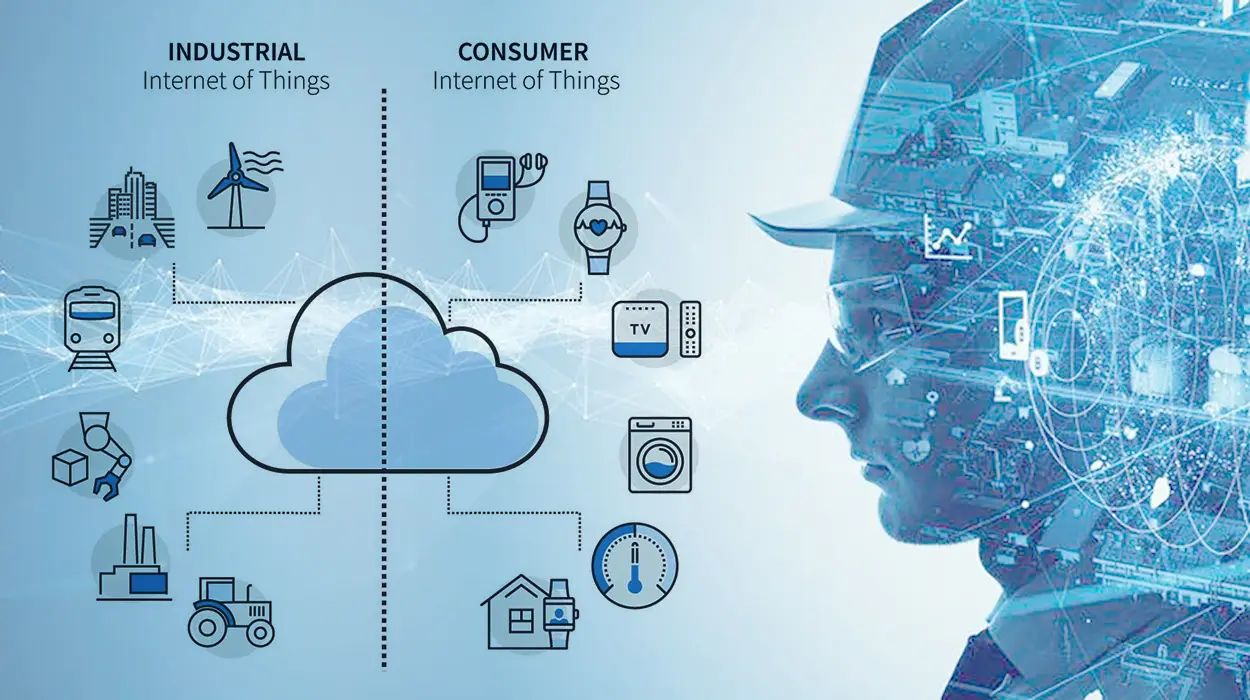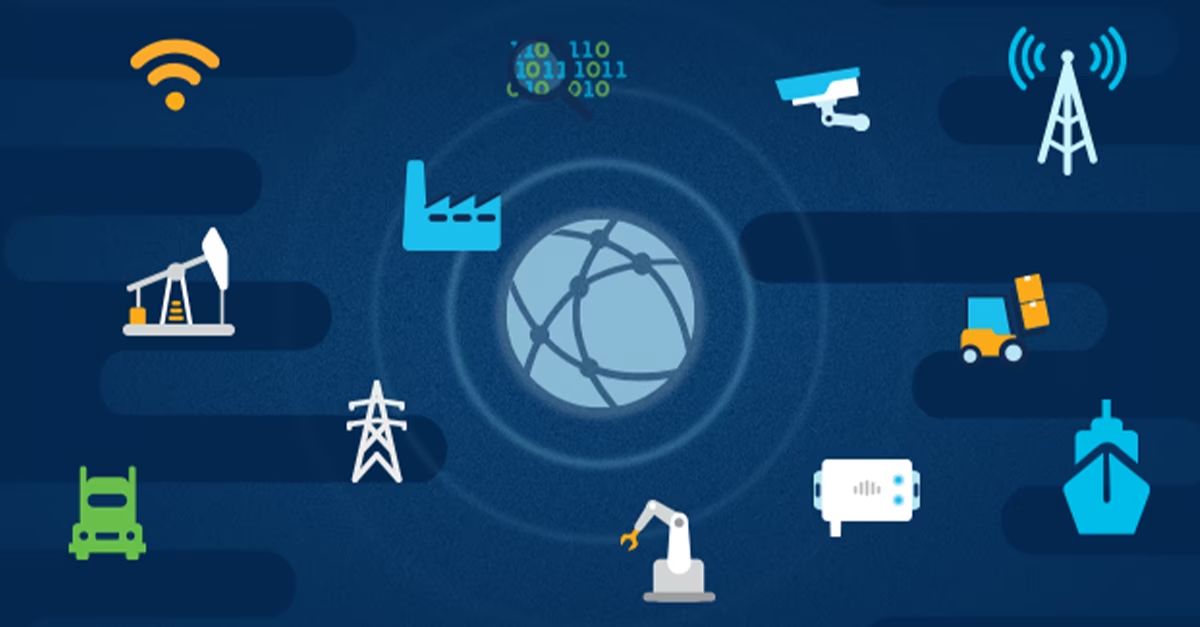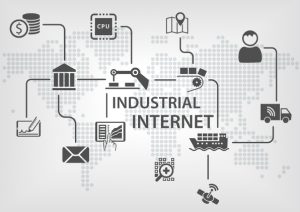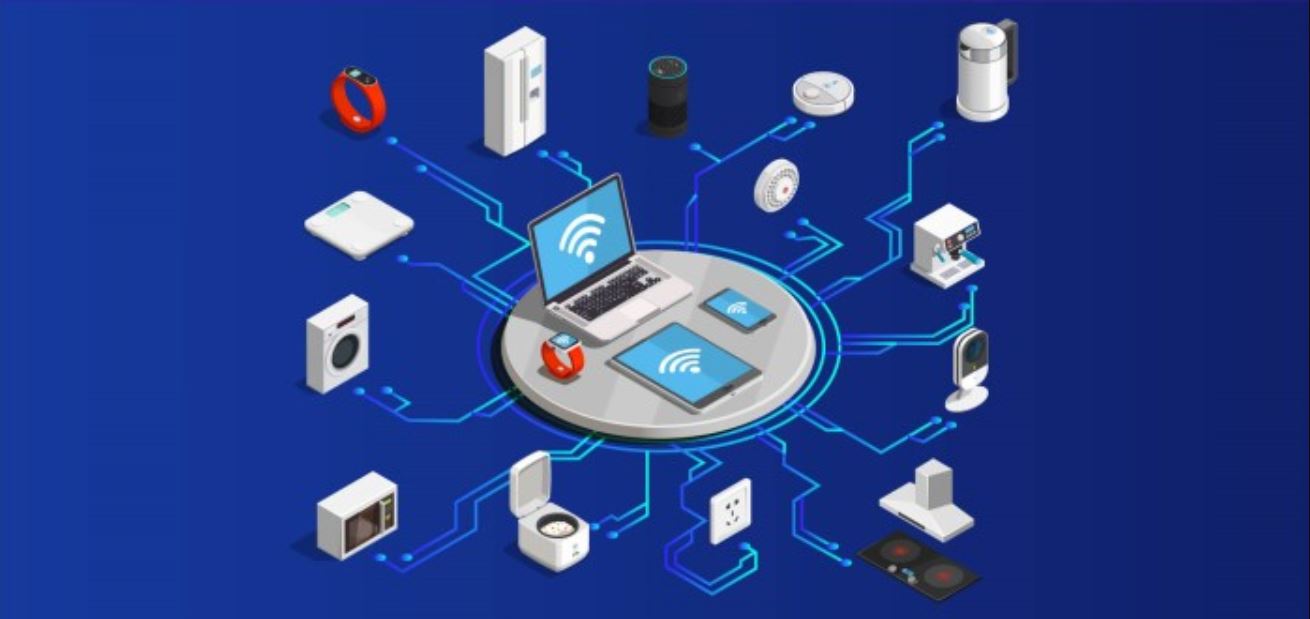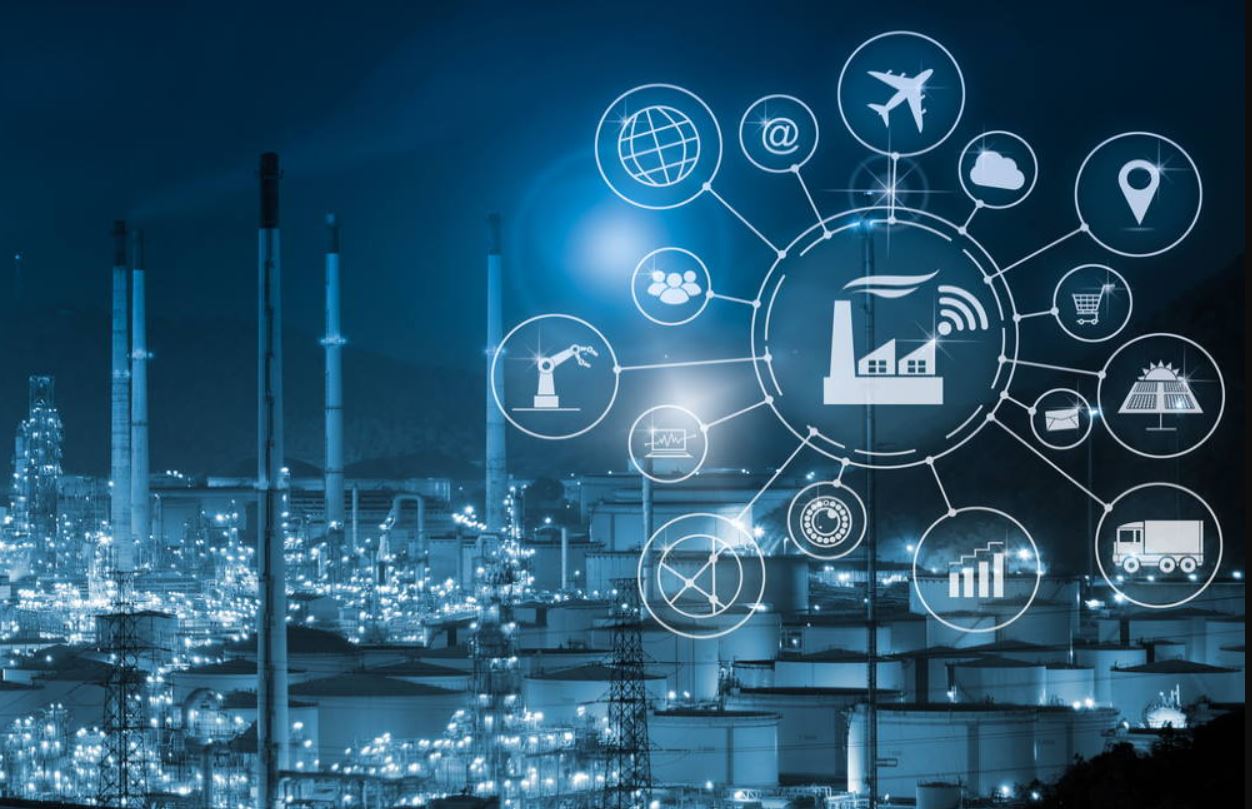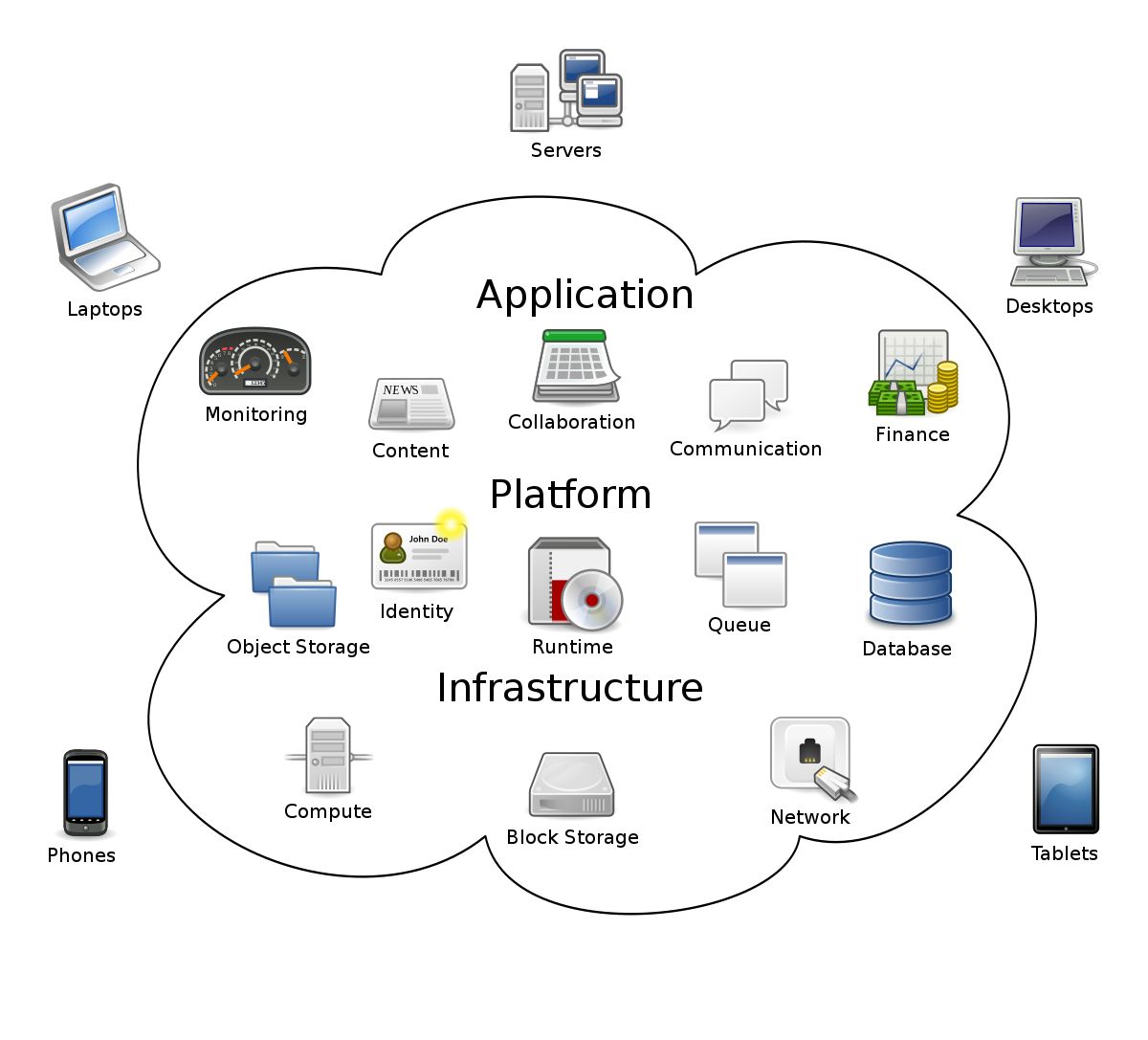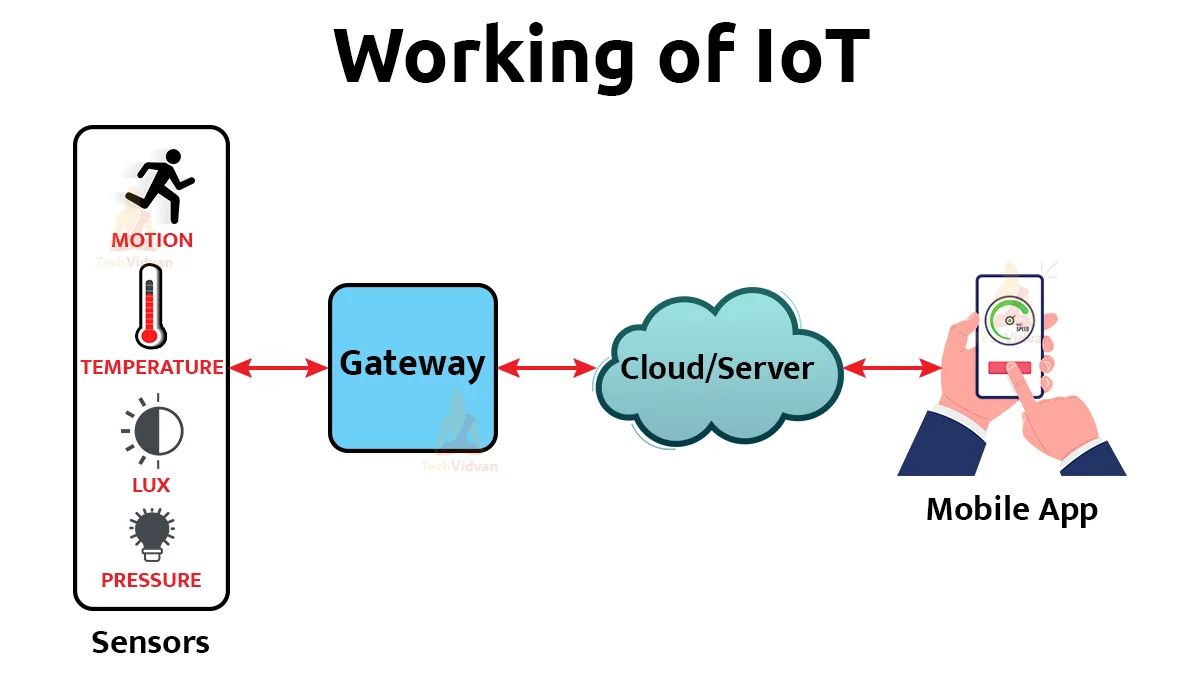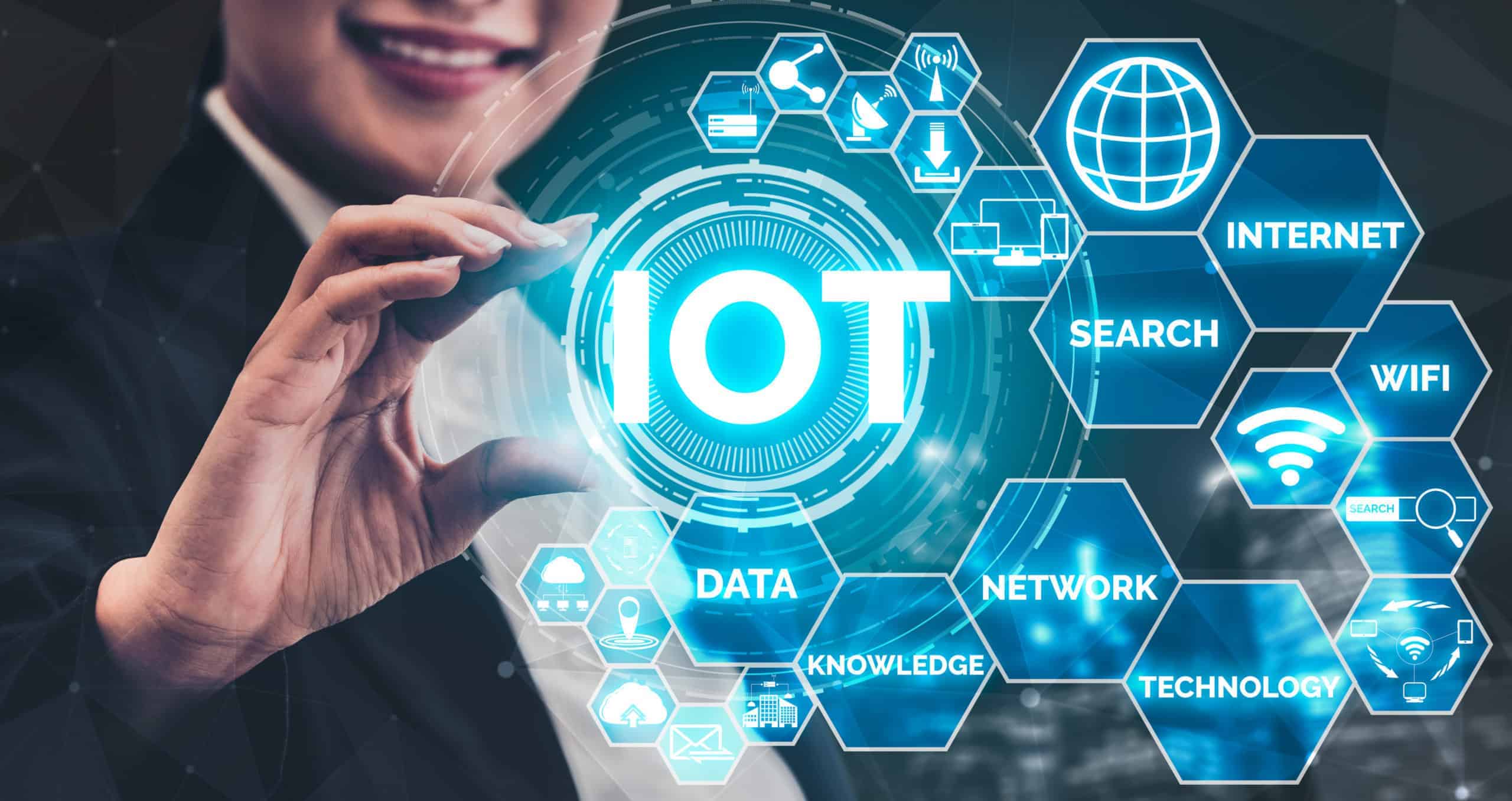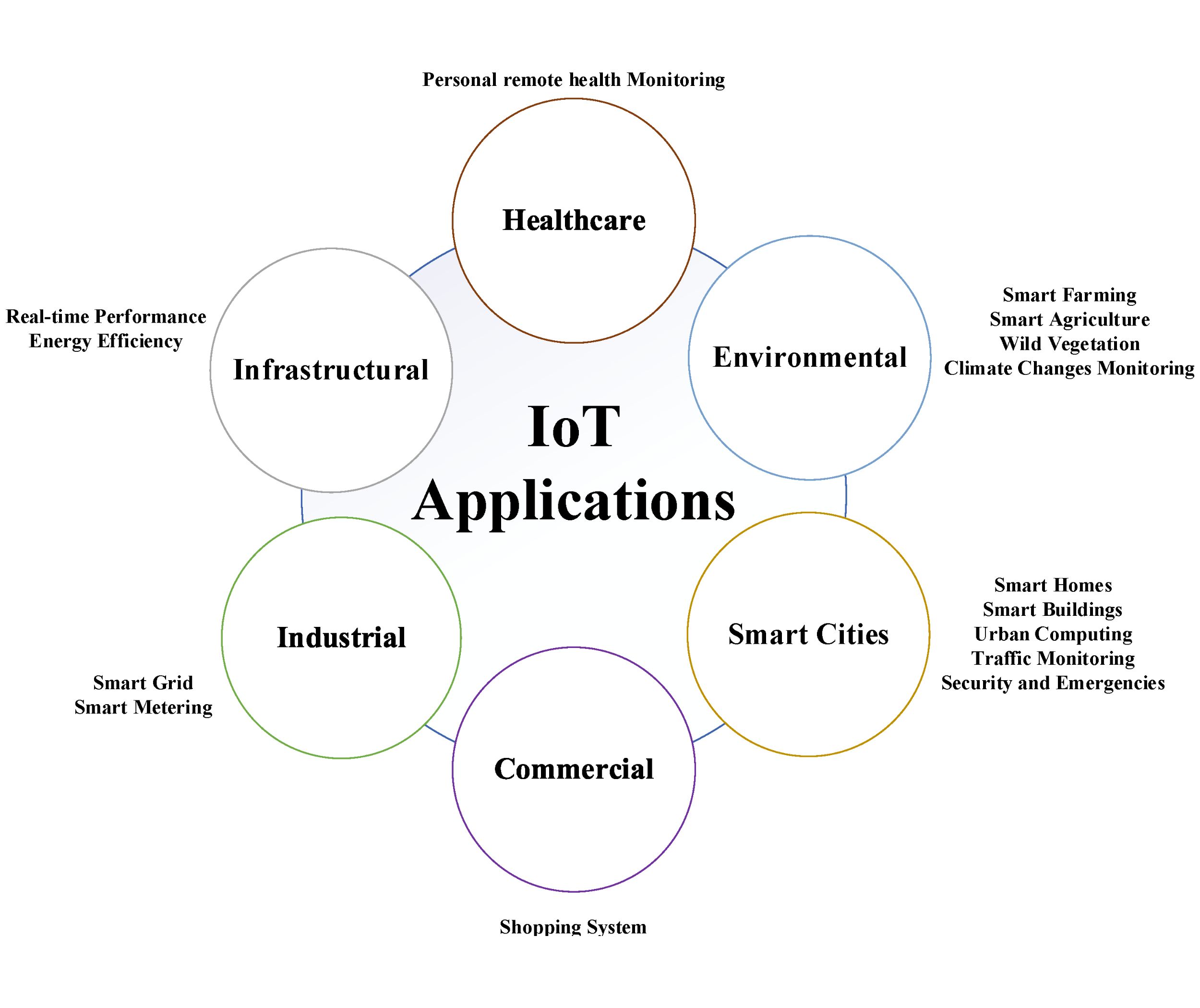Introduction
The rapid advancement of technology has brought about revolutionary changes in various aspects of our lives. One of the most significant developments in recent years is the rise of the Internet of Things (IoT) and the Industrial Internet of Things (IIoT). These interconnected technologies have brought forth a new era of connectivity, automation, and data-driven decision making.
The IoT refers to the network of physical devices, vehicles, appliances, and other objects embedded with sensors, software, and connectivity to exchange data over the internet. It enables devices to collect and share information, analyze data, and perform intelligent actions without human intervention. The IIoT, on the other hand, focuses on the application of IoT in industrial settings, such as manufacturing, energy, transportation, and healthcare. It encompasses the use of IoT technology to enhance efficiency, productivity, and safety in various industrial processes.
The main difference between IoT and IIoT lies in their applications and the scale at which they operate. While IoT is primarily oriented towards consumer-focused applications, such as smart homes, wearable devices, and personal tracking systems, IIoT is specifically designed to address the needs and challenges of industrial sectors. IIoT leverages IoT technology to enable real-time monitoring, predictive maintenance, supply chain automation, and process optimization in industrial environments.
Connectivity is another key differentiator between IoT and IIoT. IoT devices typically utilize standard internet or wireless connectivity protocols, such as Wi-Fi, Bluetooth, or cellular networks, to transmit and receive data. In contrast, IIoT devices often require specialized connectivity options, such as industrial-grade Ethernet, wireless protocols like Zigbee or Z-Wave, or proprietary communication protocols to ensure reliable and secure data exchange in industrial settings.
Scalability is also a crucial factor that distinguishes IoT and IIoT. With the proliferation of IoT devices, the number of connected devices worldwide is expected to surpass 75 billion by 2025. This massive scale poses unique challenges in terms of device management, data processing, and network infrastructure. However, IIoT operates on a comparatively smaller scale, with a focus on specific industrial applications and targeted deployments. This allows for more manageable and efficient scaling of the system to meet the specific needs of industrial operations.
Definition of IoT
The Internet of Things (IoT) is a concept that refers to the interconnection of physical devices, vehicles, buildings, and other objects embedded with sensors, software, and internet connectivity. These devices, commonly referred to as “smart” devices, can collect and exchange data to enable automation, monitoring, and control in various contexts.
IoT devices are equipped with sensors that can detect changes in their environment, such as temperature, humidity, motion, or light. The data collected by these sensors is processed and transmitted over the internet to a central system or other connected devices. This forms the foundation for the communication and exchange of information between different IoT devices.
The primary goal of IoT is to create a network of devices that can communicate with each other, collect and analyze data, and perform actions based on that data. This network enables a wide range of applications and services, ranging from home automation and personal health monitoring to industrial process optimization and smart cities.
In the context of consumer applications, IoT has given rise to the concept of a “smart home.” For example, through the use of IoT devices, homeowners can remotely control their lighting, heating, and security systems. They can also receive real-time updates and alerts on their smartphones or other connected devices.
In addition to consumer applications, IoT has a significant impact on various industries, including healthcare, transportation, agriculture, and manufacturing. In healthcare, IoT devices can monitor patients’ vital signs, remotely track their medication adherence, and enable remote consultations. In transportation, IoT enables real-time tracking of vehicles, optimizing logistics, and improving fuel efficiency. In agriculture, IoT devices can monitor soil moisture levels, weather conditions, and plant health, helping farmers make informed decisions regarding irrigation and crop management. In manufacturing, IoT enables predictive maintenance, supply chain automation, and real-time monitoring of production processes.
Overall, the Internet of Things is transforming the way we interact with our surroundings and the objects around us. It has the potential to revolutionize industries, enhance efficiency, and improve our quality of life. As technology continues to evolve, the possibilities for IoT applications are limitless, driving us towards a more connected and digitally empowered future.
Definition of IIoT
The Industrial Internet of Things (IIoT) refers to the application of Internet of Things (IoT) technology in industrial settings to enhance efficiency, productivity, and safety. It builds upon the principles of IoT and focuses on the use of connected devices, sensors, and data analytics to optimize industrial operations.
IIoT enables real-time monitoring, control, and automation in various industrial sectors, including manufacturing, energy, transportation, and healthcare. Through the deployment of IoT devices, industrial organizations can collect vast amounts of data from equipment, machines, and other assets. This data is then processed and analyzed to extract valuable insights for improving operational efficiency, predicting maintenance needs, and enhancing decision-making processes.
In manufacturing, IIoT plays a crucial role in the concept of “smart factories” or “Industry 4.0.” By connecting machines, sensors, and production lines, manufacturers can achieve real-time visibility into their operations. This enables them to identify bottlenecks, streamline processes, and optimize production schedules to maximize efficiency and reduce costs.
The energy sector benefits from IIoT by leveraging connected devices to monitor and manage power generation, transmission, and distribution systems. This allows for efficient energy utilization, predictive maintenance of critical infrastructure, and integration of renewable energy sources.
In transportation, IIoT enables real-time tracking and monitoring of vehicles, optimizing logistics, improving fleet management, and enhancing driver safety. This technology provides insights into route optimization, fuel efficiency, and vehicle maintenance, leading to cost savings and improved service quality.
The healthcare industry also experiences significant improvements through the implementation of IIoT. Connected medical devices can monitor patients remotely, collect vital health data, and provide personalized and timely interventions. IIoT also facilitates efficient inventory management, asset tracking, and optimized healthcare delivery in hospitals and clinics.
Security is a critical aspect of IIoT implementation. Since industrial environments deal with sensitive data and critical infrastructure, robust cybersecurity measures are essential. IIoT systems employ various security mechanisms, such as encryption, authentication, and access control, to protect data and prevent unauthorized access or malicious attacks.
Overall, the Industrial Internet of Things enables industrial organizations to leverage the power of IoT technology to improve productivity, reduce downtime, optimize resource utilization, and make data-driven decisions. By embracing IIoT, businesses can gain a competitive edge in their respective industries, enhance operational excellence, and adapt to the ever-changing demands of the modern world.
Connectivity
Connectivity is a critical aspect that distinguishes the Internet of Things (IoT) from the Industrial Internet of Things (IIoT). While both IoT and IIoT rely on the interconnection of devices, they differ in terms of the communication protocols and connectivity options they utilize.
In the realm of IoT, devices typically employ standard internet or wireless connectivity protocols to transmit and receive data. Wi-Fi, Bluetooth, Zigbee, and cellular networks are commonly used to establish connections between IoT devices and the internet. These communication protocols enable seamless data exchange and remote control of IoT devices in various consumer-focused applications, such as smart homes, wearables, and personal tracking systems.
On the other hand, the Industrial Internet of Things operates in industrial environments where reliability, security, and scalability are paramount. IIoT devices often require specialized connectivity options tailored to meet the specific demands of industrial operations. Industrial-grade Ethernet is commonly used to establish wired connections, providing high-speed and reliable data transmission within industrial networks.
Wireless connectivity options for IIoT devices include protocols like Zigbee, Z-Wave, and LoRaWAN. These wireless protocols are designed to operate in industrial settings, where interference and environmental factors can affect signal strength and reliability. They offer long-range communication, low power consumption, and robustness to ensure reliable data transmission across industrial facilities.
In addition to standard connectivity options, IIoT may also rely on proprietary communication protocols. These protocols are specifically developed by industrial technology providers to address the unique requirements of their devices and systems. Proprietary protocols offer enhanced security, optimization for specific industrial applications, and interoperability with existing infrastructure.
The choice of connectivity for IoT and IIoT depends on factors such as the required range, data transfer speed, power consumption, device density, and security requirements. While IoT mostly focuses on providing connectivity for consumer devices, IIoT prioritizes reliable and secure connectivity in industrial settings to ensure real-time monitoring, control, and automation of critical processes.
It is worth noting that connectivity in both IoT and IIoT is evolving. As technology advances, new communication protocols and standards are continually being developed to address the specific needs of different industries and use cases. This enables seamless integration of IoT and IIoT devices into existing infrastructure and fosters interoperability between different systems.
Overall, connectivity is a fundamental aspect of both IoT and IIoT, enabling devices to communicate, exchange data, and perform intelligent actions. While IoT focuses on consumer applications and utilizes standard connectivity protocols, IIoT emphasizes reliable and specialized connectivity options tailored to meet the unique demands of the industrial sector.
Scalability
Scalability is a crucial factor that distinguishes the Internet of Things (IoT) from the Industrial Internet of Things (IIoT). While both IoT and IIoT involve the interconnection of devices, they differ in terms of the scale at which they operate and the challenges they face when it comes to scalability.
IoT operates on a massive scale, with billions of devices connected worldwide and an ever-increasing number of IoT applications. Consumer-focused IoT applications, such as smart homes, wearables, and personal devices, contribute to this vast network. With the proliferation of IoT devices, the number of connected devices is expected to surpass 75 billion by 2025, according to some estimates.
Scalability in IoT involves managing the sheer volume of connected devices, ensuring seamless connectivity and data exchange, and processing and analyzing the massive amounts of data generated by these devices. IoT infrastructure must be capable of handling the exponential growth of devices, as well as the increasing complexity and diversity of IoT applications and use cases.
IIoT, in contrast, operates on a comparatively smaller scale. While the scale may vary depending on the specific industry and application, IIoT focuses on targeted deployments within industrial sectors. IIoT deployments aim to optimize specific industrial processes, improve efficiency, and enhance safety and productivity in industrial environments.
The smaller scale of IIoT allows for more manageable scalability. IIoT systems are designed to address the unique requirements of industrial operations, which may involve complex machinery, critical infrastructure, and regulatory compliance. IIoT infrastructure is typically designed to handle the specific needs of the industrial sector, such as real-time monitoring, predictive maintenance, and seamless integration with existing industrial systems.
Scalability in IIoT involves ensuring the efficient management and expansion of industrial deployments. IIoT systems need to accommodate additional devices, sensors, and data sources as the industrial operations grow or evolve. This requires a scalable infrastructure that can handle the increasing data volume, processing power, and connectivity requirements.
Another aspect of scalability in IIoT is the ability to integrate with legacy industrial systems and technologies. Many industries have established infrastructure and equipment that may not be compatible with IoT technology out-of-the-box. Scalability in IIoT involves ensuring seamless integration with existing systems, protocols, and standards, enabling a smooth transition to IIoT deployments without disrupting ongoing operations.
Both IoT and IIoT have different scalability requirements and challenges. While IoT deals with the massive scale of billions of connected devices, IIoT focuses on targeted deployments within industrial sectors. Both require robust infrastructure, efficient data handling, and seamless integration to scale and adapt to the evolving needs of their respective domains.
Security
Security is a critical aspect that needs to be addressed in both the Internet of Things (IoT) and the Industrial Internet of Things (IIoT). While IoT and IIoT offer numerous benefits, the massive connectivity and data exchange involved also present potential security risks and vulnerabilities.
In the realm of IoT, the sheer number of interconnected devices and the variety of applications make security a complex challenge. IoT devices, such as smart home devices and wearable gadgets, often collect and transmit sensitive personal information. If these devices are not adequately secured, they could be vulnerable to unauthorized access, data breaches, and privacy infringements.
To ensure security in IoT, manufacturers need to implement robust security measures at various levels. This includes device-level security, such as secure boot and firmware updates, encryption of data in transit, and access control mechanisms. Network security, such as authentication, firewalls, and intrusion detection systems, is also crucial to protect IoT devices from external threats.
In IIoT, security is even more critical due to the potential impact of security breaches on industrial operations. Disruptions or compromises in critical infrastructure, such as power plants, manufacturing facilities, or transportation systems, can have severe consequences in terms of safety, production, and the economy.
IIoT systems require robust cybersecurity practices to ensure the confidentiality, integrity, and availability of industrial data and control systems. This includes secure communication protocols, secure access controls, and secure storage and backup of data. IIoT devices and systems also need to be protected against physical tampering, environmental hazards, and unauthorized access by implementing measures such as physical security controls and privacy-enhancing technologies.
In addition to technical security measures, security in IoT and IIoT also relies on user awareness and education. Users need to be educated about best practices for securing their devices and networks, such as updating software regularly, using strong passwords, and not connecting to untrusted networks. Organizations should also implement policies and procedures to address security risks and ensure compliance with relevant security standards and regulations.
Both IoT and IIoT industries are actively working towards developing and improving security standards and frameworks. Secure coding practices, vulnerability assessments, and regular security audits are becoming common practices to mitigate security risks. Collaboration between manufacturers, industry associations, and government bodies is essential to establish industry-wide security guidelines and address common security challenges.
Ensuring the security of IoT and IIoT systems is an ongoing and evolving process. As technology advances and new threats emerge, it is crucial to stay updated with the latest security practices and solutions. By prioritizing security and adopting a multi-layered approach to protect IoT and IIoT systems, we can mitigate risks and build trust in the deployment of connected devices in both consumer and industrial contexts.
Data Usage
Data usage is a fundamental aspect of both the Internet of Things (IoT) and the Industrial Internet of Things (IIoT). Both IoT and IIoT rely on the collection, analysis, and utilization of data to enable intelligent decision-making, automation, and optimization in various contexts.
In the realm of IoT, data usage is centered around providing personalized experiences and enhancing convenience for end-users. IoT devices collect vast amounts of data from sensors and user interactions, enabling insights into user preferences, behavior patterns, and environmental conditions. This data is then used to personalize services, automate tasks, and provide valuable insights to users.
For instance, IoT data can be leveraged to create smart homes where devices adapt to users’ habits and preferences, adjusting lighting, temperature, and entertainment systems accordingly. IoT data can also be utilized for personalized healthcare, monitoring patients remotely, and providing timely interventions based on their health data.
In the context of IIoT, data usage focuses on optimizing industrial processes, improving efficiency, and enabling predictive maintenance. IIoT devices collect data from industrial machinery, equipment, and systems, providing real-time insights into operational performance, maintenance needs, and potential production bottlenecks.
This real-time data enables timely decision-making, facilitates proactive maintenance, and supports process optimization. For example, IIoT data can be used to monitor machine conditions, detect anomalies, and predict when maintenance is required. This proactive approach minimizes downtime, reduces costs, and ensures the smooth operation of industrial processes.
Data usage in both IoT and IIoT raises concerns regarding privacy, security, and data ownership. As the volume of data collected by IoT and IIoT devices continues to grow, there is a need to ensure that data is collected and used in a responsible and ethical manner. Privacy concerns arise when personal information is collected by IoT devices, requiring regulations and security measures to protect user data.
Furthermore, data ownership and control are important considerations when it comes to IoT and IIoT. Users and organizations need to have clear visibility and control over the data collected by IoT and IIoT devices. This includes transparency in terms of how data is collected, processed, and shared, as well as the ability to manage data access and permissions.
Effective data governance and data management strategies are essential for both IoT and IIoT. This includes ensuring data quality, data integration, and data analytics capabilities to derive meaningful insights from the vast amount of data collected. Advanced analytics techniques, such as machine learning and artificial intelligence, are employed to analyze and extract valuable information from IoT and IIoT data, enabling intelligent decision-making and predictive capabilities.
In summary, data usage plays a central role in both IoT and IIoT. In IoT, data is used to personalize services and enhance convenience, while in IIoT, data is utilized to optimize industrial processes and enable predictive maintenance. However, data privacy, security, and ownership are important considerations that need to be addressed to ensure responsible and ethical data usage in IoT and IIoT applications.
Applications
The Internet of Things (IoT) and the Industrial Internet of Things (IIoT) have a wide range of applications across various industries, transforming the way we live and work. From smart homes to advanced industrial processes, IoT and IIoT technologies are revolutionizing diverse sectors and delivering significant benefits.
In the consumer space, IoT applications have become increasingly popular. Smart homes, for example, utilize IoT devices to enhance convenience, energy efficiency, and security. Connected devices such as smart thermostats, lighting systems, and home security systems allow homeowners to control and monitor their houses remotely. Wearable devices like fitness trackers and smartwatches collect health data, enabling users to track their fitness goals and receive personalized recommendations.
Healthcare is another area where IoT is making significant advancements. IoT devices can monitor patients remotely, collect vital signs, and deliver real-time data to healthcare professionals for accurate diagnoses and personalized care. Connected medical devices, such as insulin pumps and cardiac monitors, enhance patient safety and improve treatment outcomes.
In transportation, IoT technology is being leveraged for improved logistics, fleet management, and driver safety. Connected vehicles can collect real-time data on driver behavior, fuel consumption, and vehicle conditions. This data allows for efficient route planning, reduced fuel wastage, and proactive maintenance, resulting in cost savings and enhanced road safety.
IIoT applications have transformed industrial sectors by optimizing processes, improving efficiency, and ensuring safety. In manufacturing, IIoT enables real-time monitoring of production lines, predictive maintenance of machinery, and automation of supply chain management. This results in increased productivity, minimized downtime, and improved quality control.
The energy sector benefits from IIoT through the optimization of power generation, distribution, and consumption. By leveraging IIoT devices, energy providers can monitor power grids, detect faults, and manage energy usage more efficiently. This leads to improved energy efficiency, reduced costs, and increased reliability of the power supply.
The agriculture industry has also seen significant advancements with IIoT. Smart farming utilizes connected devices and sensors to monitor soil moisture, weather conditions, and crop health. This data allows farmers to optimize irrigation, apply fertilizers more effectively, and predict crop yields, leading to improved resource efficiency and higher agricultural productivity.
IIoT applications are also prevalent in healthcare, where medical facilities utilize connected medical devices for remote patient monitoring and asset tracking. Real-time data from medical devices and equipment helps healthcare providers make informed decisions, streamline workflows, and improve patient outcomes.
These are just a few examples of the countless applications of IoT and IIoT. As technology continues to advance, the possibilities for innovative IoT and IIoT implementations across a wide range of industries are boundless. From consumer convenience to industrial optimization, IoT and IIoT are transforming our world and shaping the future of how we live and work.
Major Industries
The Internet of Things (IoT) and the Industrial Internet of Things (IIoT) have found applications in various major industries, revolutionizing their operations, enhancing efficiency, and driving innovation. Let’s explore some of the key industries that have embraced IoT and IIoT technologies.
Manufacturing is one of the major industries where IIoT has made significant advancements. IIoT enables real-time monitoring of production lines, machines, and equipment, allowing manufacturers to optimize efficiency, improve quality control, and minimize downtime. Connected sensors and devices provide valuable insights into machine conditions, enabling predictive maintenance and reducing the risk of unexpected equipment failures.
Energy is another industry that has leveraged IoT and IIoT to improve efficiency and sustainability. Smart grids equipped with IoT devices enable real-time monitoring and management of energy consumption, grid stability, and demand response. By intelligently managing energy distribution and utilization, energy companies can optimize resource allocation, reduce wastage, and integrate renewable energy sources into the grid.
The transportation industry has also benefited significantly from IoT and IIoT applications. Connected vehicles equipped with IoT sensors and communication systems provide valuable data on vehicle performance, driver behavior, and road conditions. This data enables efficient fleet management, optimized logistics, and improved safety through features such as collision detection and driver assistance systems.
Healthcare has witnessed remarkable advancements through IoT and IIoT technologies. IoT devices, such as wearables and remote monitoring systems, allow for continuous patient monitoring, remote consultations, and personalized healthcare delivery. IIoT is also transforming healthcare facilities by improving inventory management, asset tracking, and patient safety through the integration of smart medical devices and real-time data analytics.
The agriculture industry has embraced IoT and IIoT for precise monitoring and optimization of farming operations. Connected sensors and devices enable farmers to monitor soil moisture, temperature, and nutrient levels, providing valuable data for precision irrigation and fertilization. With the help of IIoT, farmers can make data-driven decisions, optimize resource utilization, and maximize crop yields while minimizing environmental impact.
Smart cities are another major application area for IoT and IIoT. These connected cities utilize IoT technologies to enhance efficiency, sustainability, and quality of life for their residents. IoT-enabled sensors and devices collect data on things like traffic flow, air quality, waste management, and energy consumption. This data is then used to optimize urban planning, reduce congestion, manage resources efficiently, and improve citizen services.
In summary, IoT and IIoT have made significant inroads into major industries, transforming their operations, enhancing efficiency, and unlocking new possibilities. Manufacturing, energy, transportation, healthcare, agriculture, and smart cities are just a few examples of the industries that are leveraging IoT and IIoT technologies to drive innovation and improve business outcomes. As IoT continues to evolve, we can expect even greater integration and adoption of these technologies across various sectors, leading to further advancements and improvements in our everyday lives.
Conclusion
The Internet of Things (IoT) and the Industrial Internet of Things (IIoT) have revolutionized the way we live and work, bringing connectivity, automation, and data-driven decision making to various industries. IoT has found applications in consumer-focused domains, such as smart homes and wearable devices, while IIoT has transformed industrial sectors, including manufacturing, energy, transportation, and healthcare.
IoT and IIoT enable devices to collect, exchange, and analyze data, allowing for intelligent actions and enhanced efficiency. Through the interconnection of devices, sensors, and systems, IoT and IIoT offer personalized experiences, optimized processes, and improved safety. Whether it is controlling home appliances with a smartphone, monitoring machine conditions in a factory, or remotely managing critical infrastructure, these technologies bring numerous benefits to individuals, businesses, and society as a whole.
Connectivity is a fundamental aspect of IoT and IIoT, with IoT devices utilizing standard internet or wireless protocols, while IIoT devices often require specialized connectivity options tailored to industrial environments. Scalability is also a key differentiator, with IoT operating on a massive scale, while IIoT focuses on targeted deployments within specific industries.
Security and data usage are critical considerations in both IoT and IIoT. Protecting data privacy, ensuring secure communication, and addressing potential vulnerabilities are essential to build trust in these interconnected systems. Effective data usage enables personalized experiences, efficient processes, and informed decision-making, while ensuring responsible data governance and user control.
Major industries, including manufacturing, energy, transportation, healthcare, agriculture, and smart cities, have embraced IoT and IIoT to drive innovation and improve operational outcomes. These technologies have transformed how these industries operate, optimizing processes, improving efficiency, and delivering sustainable solutions.
As IoT and IIoT continue to advance, the possibilities for their application are limitless. From improving our daily lives to revolutionizing industries, these technologies are reshaping the way we interact with the world around us. However, it is important to navigate this technological landscape responsibly, addressing challenges such as security, scalability, data privacy, and ethical data usage.
With continued advancements, collaboration between industry stakeholders, and effective governance, IoT and IIoT have the potential to drive further innovation, enhance productivity, and create a more connected and sustainable future. By leveraging the power of IoT and IIoT, we can unlock new opportunities, overcome challenges, and shape a better tomorrow.







